door closer fitting instructions
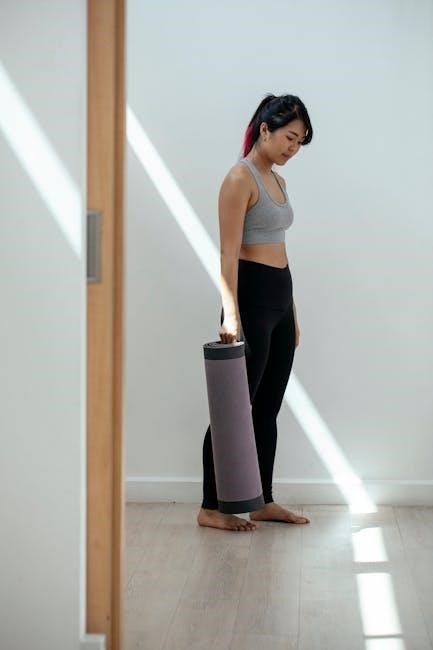
A door closer is an essential device ensuring doors close automatically, providing convenience, security, and energy efficiency․ Proper installation is crucial for smooth operation and longevity․ This guide offers step-by-step instructions and expert tips to help you fit a door closer correctly, addressing common challenges and ensuring optimal performance․
What is a Door Closer?
A door closer is a mechanical or pneumatic device designed to automatically close doors after they have been opened․ It ensures doors return to their closed position, providing security, energy efficiency, and convenience․ Available in various types, door closers can be adjusted to control closing speed and force, catering to different door sizes and weights․ Some models feature advanced mechanisms for smoother operation, while others include silent closing options․ Properly installed, a door closer enhances functionality and durability, making it an essential component for both residential and commercial settings․
Why Proper Installation is Important
Proper installation of a door closer is crucial for ensuring optimal functionality, safety, and longevity․ Incorrect fitting can lead to issues like improper door alignment, uneven closing force, or increased wear on components, potentially causing safety hazards or security risks․ A well-installed door closer ensures smooth operation, reduces the risk of damage to the door or frame, and provides consistent performance over time․ Additionally, proper installation aligns with manufacturer guidelines, maintaining warranty validity and ensuring compliance with safety standards․ By following precise fitting instructions, you can achieve a durable, efficient, and secure door closing system tailored to your specific needs․

Components of a Door Closer
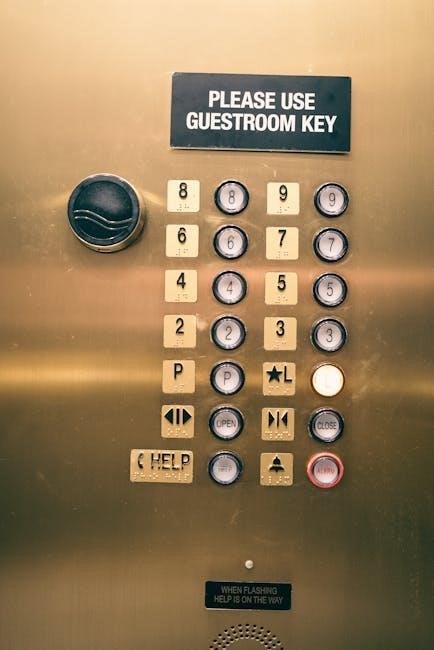
A door closer consists of a main body, arm assembly, adjustment valves, mounting brackets, and screws․ These parts ensure smooth, controlled door movement and proper alignment․
Main Door Closer Body
The main door closer body is the core component, housing the spring and hydraulic mechanism that powers the door’s closing action․ Typically made of durable metal, it is engineered to withstand heavy use․ The body contains the essential internal parts, including the piston, cylinder, and valves, which control the closing speed and force․ Proper installation ensures the door closes smoothly and securely․ The body is usually mounted on the door frame or directly on the door, depending on the type․ Its design allows for adjustments to customize the closing speed and latching force, making it versatile for various door types and sizes․
Arm and Forearm Assembly
The arm and forearm assembly is a critical component, responsible for transferring the closing force from the main body to the door․ Typically made of robust metal, the arm connects the door closer body to the door itself․ The forearm attaches to the door and aligns with the arm, ensuring smooth operation․ The assembly is designed to be durable and flexible, accommodating different door sizes and types․ Proper alignment and secure fastening are essential to ensure the door closes evenly and without resistance․ Adjustments to the arm and forearm assembly can fine-tune the door’s closing motion, ensuring optimal performance and longevity of the door closer system․
Adjustment Valves
Adjustment valves are essential for controlling the door closer’s operation, allowing customization of closing speed and force․ Typically, these valves regulate hydraulic pressure within the door closer, enabling precise adjustments․ Most door closers feature multiple adjustment valves, each responsible for different phases of the door’s movement, such as closing speed, latching force, and backcheck control․ Proper adjustment ensures the door closes smoothly, securely, and safely․ Incorrect settings can lead to issues like the door closing too forcefully or failing to latch․ Manufacturers provide specific guidelines for adjusting these valves, and using the correct tools is crucial to avoid damage․ Regular maintenance ensures optimal performance and longevity of the door closer system․
Mounting Brackets
Mounting brackets are critical components for securing the door closer to the door and its frame․ Typically made of durable metal, these brackets provide a stable base for the door closer’s operation․ They come in different configurations, such as slide track or ball bearing designs, to accommodate various door types and weights․ Proper alignment and placement of the mounting brackets are essential for smooth functionality․ Manufacturers often provide templates or guides to mark screw holes accurately․ Once installed, the brackets hold the door closer in position, ensuring consistent performance․ Incorrect installation can lead to misalignment or uneven door movement, emphasizing the need for precise placement and securing with the right screws and washers․
Screws and Washers
Screws and washers are essential hardware for securing the door closer to the door and frame․ High-quality screws, often made of stainless steel or brass, ensure durability and resistance to corrosion․ Washers, typically metallic or nylon, are placed under screw heads to prevent loosening and provide a smooth surface for the door closer’s operation․ Different screw lengths and washer sizes accommodate various door materials and thicknesses․ Properly tightening screws ensures the door closer functions effectively, while washers help distribute pressure evenly․ Using the correct screws and washers as specified by the manufacturer guarantees a secure and lasting installation․ Always consult the manufacturer’s guide for specific recommendations․
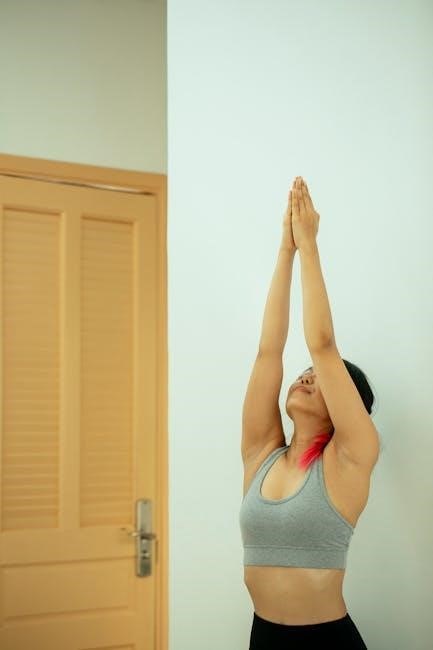
Preparation for Installation
Proper preparation ensures a smooth installation․ Assess the door’s condition, ensure the frame is stable, align the door, and check for any obstructions beforehand․
Tools and Materials Needed
Essential tools include a drill, screwdriver, measuring tape, level, and wrench․ Materials needed are screws, washers, and the door closer kit․ Gather these beforehand to ensure efficiency․
Measuring the Door and Frame
Accurate measurements are crucial for proper door closer installation․ Measure the door’s width, thickness, and the frame’s dimensions․ Ensure the door closer aligns with the hinge side and door swing direction․ Use a tape measure to determine the distance between hinges and the frame․ Check the door’s weight to select the appropriate closer strength․ Mark the door and frame where the closer will be mounted, ensuring alignment with the door’s pivot point․ Double-check all measurements to avoid installation errors․ Proper measurement ensures the closer functions smoothly and lasts longer․ Always refer to the manufacturer’s guidelines for specific sizing requirements․ Accuracy is key․
Choosing the Right Door Closer
Selecting the correct door closer is essential for optimal performance and safety․ Consider the door’s weight, size, and material, as different closers are designed for specific loads․ Assess the door’s purpose—whether it’s for commercial, residential, or high-traffic use․ Fire-rated doors require closers that meet fire safety standards․ Choose between surface-mounted, concealed, or overhead closers based on the door’s design and installation constraints․ Ensure the closer’s adjustment features, such as speed and force, match the door’s needs․ Compliance with local building codes and accessibility regulations, like ADA standards, is also crucial․ The right closer ensures smooth operation, durability, and safety․ Always consult manufacturer guidelines for recommendations․ Proper selection guarantees long-term functionality․

Step-by-Step Installation Guide
- Mark closer placement on door and frame․
- Drill pilot holes for screws․
- Mount the closer body securely․
- Attach the main arm to the frame․
- Connect the forearm to the door․
- Adjust alignment for proper closing․
- Tighten all screws firmly․
- Test the door’s closing mechanism․
Follow these steps for a smooth, functional installation․
Mark the Placement of the Door Closer
Accurate placement is critical for proper door closer function․ Position the closer body on the door, typically 1/4 inch from the hinge side․ Measure and mark the center of the closer on the door edge․ Ensure alignment with the frame’s mounting bracket․ Use a pencil to mark screw hole locations․ Double-check measurements to avoid misalignment․ Incorrect placement can lead to poor door operation or increased wear․ Take your time to ensure markings are precise․ This step sets the foundation for a successful installation․ Proper alignment ensures smooth closing and longevity of the door closer mechanism․
Drill Pilot Holes in the Door and Frame
Using the marks from the previous step, drill pilot holes in both the door and frame․ Start with a small drill bit to avoid damaging the material․ Ensure the holes are straight and aligned with the pencil marks․ For metal doors, use a sharp, high-speed steel bit, while wood doors require a standard twist bit․ Drill carefully to maintain accuracy․ Avoid applying too much pressure, which could cause the door to split or the frame to crack․ After drilling, inspect the holes to ensure they match the screw locations․ Clean debris from the holes to prepare for the next step․ Precision is key here for a secure fit․
Attach the Door Closer Body
Place the door closer body over the pilot holes, ensuring it aligns perfectly with the marks․ Insert the provided screws through the body and into the holes․ Use a screwdriver to secure the body firmly to the door․ Avoid overtightening, as this may damage the door or the closer․ For metal doors, ensure the screws are tightly fastened to prevent loosening over time․ On wooden doors, use washers if necessary to distribute the screw pressure evenly․ Make sure the body is flush against the door surface for proper operation․ Double-check the alignment before proceeding to the next step․ A secure attachment is vital for reliable performance․
Install the Main Arm
Attach the main arm to the door closer body by aligning its pivot pin with the corresponding hole․ Secure it using the provided screws or bolts․ Tighten firmly with a screwdriver or Allen wrench, ensuring the arm is straight and properly seated․ If your model includes an adjustment feature, set the arm to its neutral position before securing․ Use a level to ensure the arm is aligned vertically or horizontally, depending on the door type․ Double-check the manufacturer’s instructions for specific torque requirements to avoid over-tightening․ A snug, even fit is crucial for smooth operation and long-term durability of the door closer system․
Secure the Forearm Assembly
Attach the forearm assembly to the door by aligning its mounting holes with the screws or brackets provided․ Use the appropriate screws to secure it firmly, ensuring the forearm is flush against the door edge․ Tighten the screws gradually, alternating between them to maintain even pressure and avoid warping the door․ Do not overtighten, as this could damage the door or the closer mechanism․ Once secured, check that the forearm moves freely without binding․ Use a level to ensure proper alignment with the main arm․ Refer to the manufacturer’s instructions for specific torque recommendations․ A snug, even fit ensures optimal performance and durability of the door closer system․
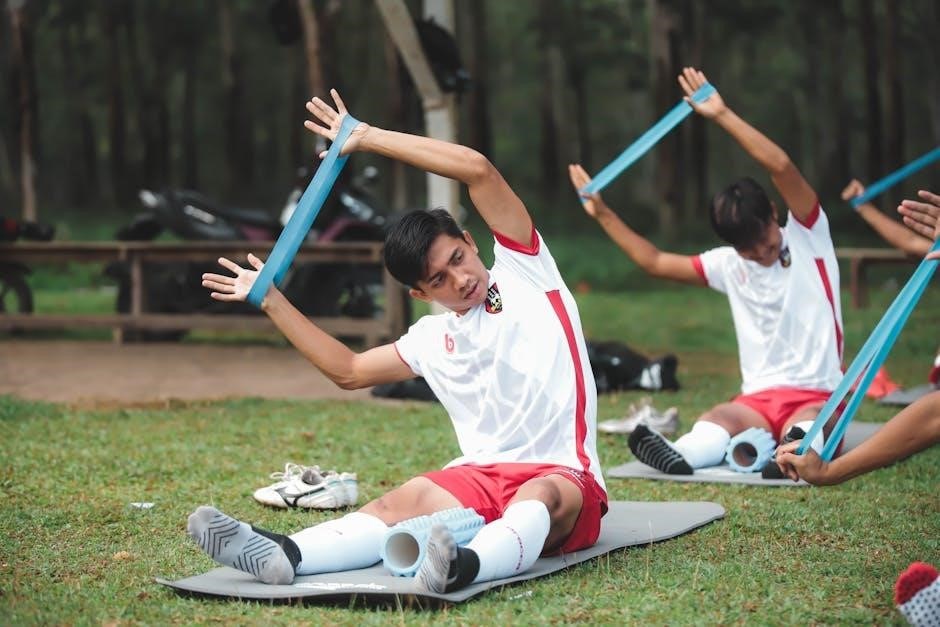
Align the Door Closer Properly
Proper alignment is critical for the door closer to function smoothly․ Ensure the main arm and forearm are correctly positioned to match the door’s swing and frame․ Use a level to verify that the door closer body is straight and evenly spaced from the door edge․ Adjust the main arm slightly if necessary to achieve proper alignment․ Check that the forearm assembly aligns with the door’s edge and the strike plate․ Make sure the door closer is centered on the door to prevent uneven wear․ If the alignment is off, the door may not close properly or could damage the frame over time․
Tighten All Screws
Tightening all screws is essential for securing the door closer components․ Use an Allen wrench or screwdriver to tighten the screws on the main door closer body, arm, and forearm assembly․ Start with the screws on the main body, ensuring they are snug but not overtightened․ Next, tighten the screws on the arm and forearm, making sure they are firmly secured to the door and frame․ Avoid overtightening, as this could damage the door or frame․ Double-check all connections to ensure they are secure and properly aligned․ Finally, test the door to confirm smooth operation․ Properly tightened screws ensure reliable and long-lasting performance of the door closer․
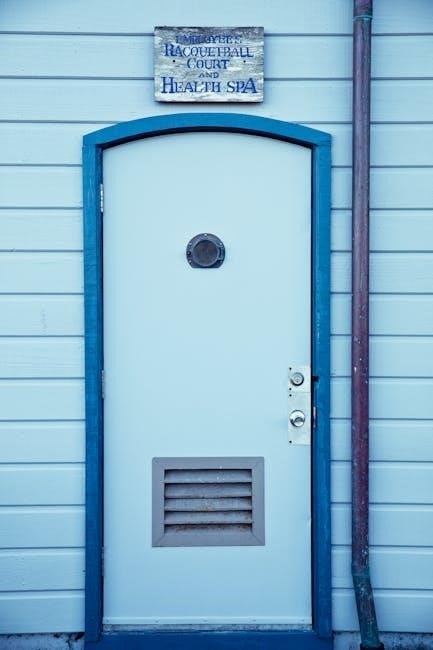
Test the Door Closing Mechanism
After tightening all screws, test the door closing mechanism to ensure proper function․ Open the door fully and allow it to close automatically․ Observe the closing action to ensure it is smooth and consistent․ Check that the door closes completely, latches securely, and aligns properly with the frame․ Test the closing speed and force to confirm they are appropriate for the door’s weight and usage․ If the door closes too quickly or slowly, or fails to latch, adjustments may be needed․ Repeat the test several times from different angles to ensure reliable operation․ Proper testing ensures safety, functionality, and longevity of the door closer system․
Adjusting the Door Closer
Adjusting ensures smooth operation, proper alignment, and optimal performance․ Fine-tune closing speed, latching force, and door alignment for seamless functionality․ Follow manufacturer guidelines for precise adjustments․
How to Adjust Closing Speed
Adjusting the closing speed ensures the door shuts smoothly and safely․ Locate the adjustment valve on the door closer body, typically marked with speed settings․ Use an Allen wrench to turn the valve clockwise to slow down the closing speed or counterclockwise to increase it․ Test the door after each adjustment to achieve the desired speed․ Be cautious not to over-tighten, as this may damage the mechanism․ Fine-tune in small increments, checking the door’s movement each time․ Proper adjustment ensures the door closes neither too abruptly nor too slowly, balancing convenience and safety․ Always refer to the manufacturer’s manual for specific guidance․
How to Adjust Latching Force
Adjusting the latching force ensures the door securely closes and latches properly without excessive force․ Locate the adjustment valve, often labeled with an “L” or a latch symbol․ Using an Allen wrench, turn the valve clockwise to increase the latching force or counterclockwise to decrease it․ Test the door after each adjustment to ensure it latches smoothly․ Avoid over-tightening, as this may damage the door or frame․ Make small adjustments and test repeatedly to achieve the ideal force․ Proper latching force prevents gaps and ensures security․ Refer to the manufacturer’s instructions for specific guidance on your door closer model․
Fine-Tuning the Door Alignment
Fine-tuning the door alignment ensures smooth operation and proper closure․ Start by checking the door’s hinge alignment and frame placement․ Adjust the door closer’s arm and forearm to align with the strike plate․ Use the adjustment screws on the door closer to fine-tune the alignment, ensuring the door closes squarely․ If the door drags or catches, slight adjustments to the forearm or main arm may be needed․ Test the door’s movement repeatedly to confirm proper alignment․ Proper alignment prevents uneven wear and ensures the door closer functions efficiently․ Always refer to the manufacturer’s guidelines for specific adjustment procedures․
Maintenance and Care
Regular maintenance ensures the door closer functions optimally; Clean the mechanism, lubricate moving parts, and inspect for wear․ Address issues promptly to maintain smooth operation and durability․
Regular Checks and Lubrication
Regular checks and lubrication are essential to ensure the door closer operates smoothly and lasts longer; Inspect the closer monthly for proper alignment, wear, or damage․ Lubricate all moving parts, such as hinges and arm joints, with a silicone-based spray to reduce friction and prevent squeaking․ Clean dirt or grime from the mechanism to avoid interference․ Check the arm spring tension and adjust if necessary․ Replace worn-out O-rings or seals to maintain hydraulic efficiency․ Lubricate adjustment valves to ensure smooth operation․ Regular maintenance prevents premature wear and ensures the door closer functions as intended, providing consistent performance over time․
Cleaning the Door Closer
Cleaning the door closer is crucial for maintaining its functionality and appearance․ Use a soft, dry cloth to wipe away dirt, dust, or grease from the surface․ For stubborn grime, dampen the cloth with mild soap and water, but avoid harsh chemicals or abrasive cleaners that could damage the finish․ Avoid spraying liquids directly on the closer to prevent internal corrosion․ Regular cleaning removes contaminants that may interfere with proper operation․ Use compressed air to gently remove debris from small crevices․ Always dry the mechanism thoroughly after cleaning to prevent rust․ Cleaning ensures the door closer remains efficient and visually appealing over time․
Replacing Worn-Out Parts
Replacing worn-out parts is essential to ensure the door closer functions correctly․ Regularly inspect components like the arm, forearm, and adjustment valves for signs of wear․ If damage is found, replace the part immediately to prevent further issues․ Use original equipment manufacturer (OEM) parts for compatibility and reliability․ Turn off power to the door system before starting․ Carefully disassemble the closer, remove the damaged part, and install the new one following the manufacturer’s instructions․ Reassemble and test the door to ensure smooth operation․ Replace screws or washers if they show signs of wear․ Proper replacement extends the lifespan and maintains the door closer’s efficiency and safety․
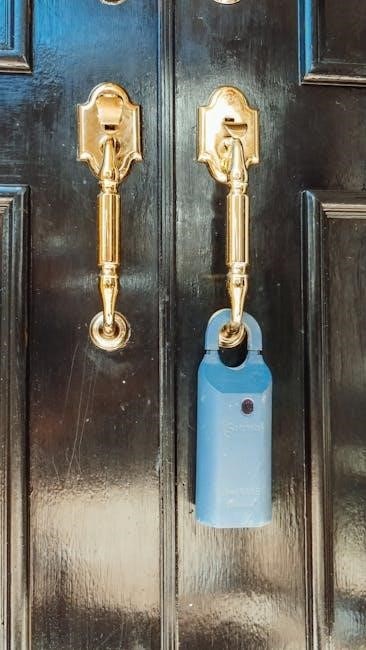
Troubleshooting Common Issues
Troubleshooting common issues with door closers involves identifying the problem, such as improper closing or noise․ Check alignment, adjust the closer, and lubricate moving parts if necessary․
Door Not Closing Properly
If a door isn’t closing properly, inspect the door closer’s alignment and adjustment․ Ensure the main arm and forearm are securely attached and properly aligned with the door frame․ Check for obstructions or worn-out parts, such as hinges or gaskets, which may hinder smooth closure․ Verify that adjustment valves are set correctly, as improper settings can affect closing force and speed․ Lubricate moving parts if necessary․ If issues persist, consider consulting the manufacturer’s instructions or seeking professional assistance to ensure proper functionality and safety․

Door Closing Too Slow or Too Fast
If the door closes too slow or too fast, adjust the door closer’s speed settings․ Most closers have adjustment valves that control the closing speed․ Turn the valves clockwise to increase speed or counterclockwise to decrease it․ Ensure the adjustments are made gradually and tested after each change․ Over-tightening can damage the mechanism, so be cautious․ If the issue persists, check for air leaks in the closer or worn seals․ Proper adjustment ensures smooth operation and safety․ Always refer to the manufacturer’s guidelines for specific instructions on adjusting your model․
Noise During Operation
Noise during operation can indicate worn or loose parts; Inspect the door closer’s components, such as the arm, forearm, or adjustment valves, for wear; Lubricate moving parts with silicone-based spray to reduce friction and noise․ If screws or brackets are loose, tighten them firmly․ Misaligned parts may also cause noise, so check the door closer’s alignment with the door and frame․ For persistent noise, replace worn-out components like the main arm or bushes․ Regular maintenance, such as cleaning and lubrication, can prevent noise issues․ Always follow the manufacturer’s recommendations for lubricants and replacement parts to ensure smooth operation․
A proper door closer installation ensures smooth operation, safety, and durability․ Follow the guide carefully for optimal results and trouble-free functionality over time․
Final Tips for a Smooth Installation
For a seamless door closer installation, double-check all measurements and ensure tools are ready․ Follow manufacturer instructions precisely to avoid errors․ Tighten screws gradually and verify alignment․ Test the door’s movement post-installation to ensure smooth closing․ Lubricate hinges if necessary for silent operation․ Keep the area clean to prevent debris interference․ Patience and attention to detail are key for a professional finish․ Remember, proper installation enhances safety, efficiency, and longevity of the door closer․ By adhering to these tips, you’ll achieve a flawless and durable result․
Importance of Following Manufacturer Instructions
Adhering to manufacturer instructions is crucial for a successful door closer installation․ These guidelines are tailored to the specific product, ensuring proper function and safety․ Deviating from instructions can lead to poor performance, safety hazards, or voiding the warranty․ Manufacturer instructions provide precise steps, helping avoid common mistakes․ They also ensure compliance with industry standards and regulations․ By following the recommended procedures, you can achieve optimal results and extend the lifespan of the door closer․ Always prioritize these instructions to guarantee reliability, efficiency, and long-term satisfaction with your installation․

Additional Resources
- Manufacturer Manuals and Guides for detailed specifications․
- Online Tutorials and Videos for visual guidance․
- Recommended Tools and Suppliers for high-quality materials․
- Door Closer Forums for community support․
Recommended Tools and Suppliers
For a successful door closer installation, ensure you have the right tools and materials․ Essential tools include a drill, screwdriver set, measuring tape, level, and wrench․ Leading suppliers like Home Depot, Lowe’s, and Amazon offer high-quality door closers and hardware․ Specialized suppliers like Grainger and Rockwell provide durable components․ Always verify product compatibility and manufacturer recommendations․ Online marketplaces often include customer reviews to guide your selection․ Local hardware stores may also offer expert advice․ Remember to check tool calibration and material condition before starting․ Proper tools ensure precise installation and longevity of the door closer․
Manufacturer Manuals and Guides
Manufacturer manuals and guides are indispensable for accurate door closer installation․ These resources provide detailed step-by-step instructions tailored to specific models․ Leading brands like Dorma, Kaba, and Sargent offer comprehensive guides․ They typically include diagrams, torque specifications, and troubleshooting tips․ Always refer to the manual provided with your door closer for precise instructions․ Many manufacturers also offer digital versions on their websites․ These guides ensure compliance with safety standards and optimal performance․ For complex installations, manufacturer guides often recommend consulting professionals․ Familiarize yourself with the manual before starting to avoid errors․ Proper adherence ensures durability and functionality, making it a critical resource for both novices and experts․
Online Tutorials and Videos
Online tutorials and videos are excellent resources for mastering door closer installation․ Platforms like YouTube and Vimeo host numerous DIY guides, offering visual step-by-step instructions․ Channels such as This Old House and Home Repair Tutor provide detailed demonstrations․ These videos often cover topics like adjusting door closer speed and troubleshooting common issues․ Many manufacturers, like Dorma and Kaba, upload official installation videos․ Additionally, forums like Reddit and specialized trade websites share user experiences and tips․ Watching these tutorials can help novices gain confidence and ensure professionals refine their techniques․ Always search for content specific to your door closer model for the most relevant advice․